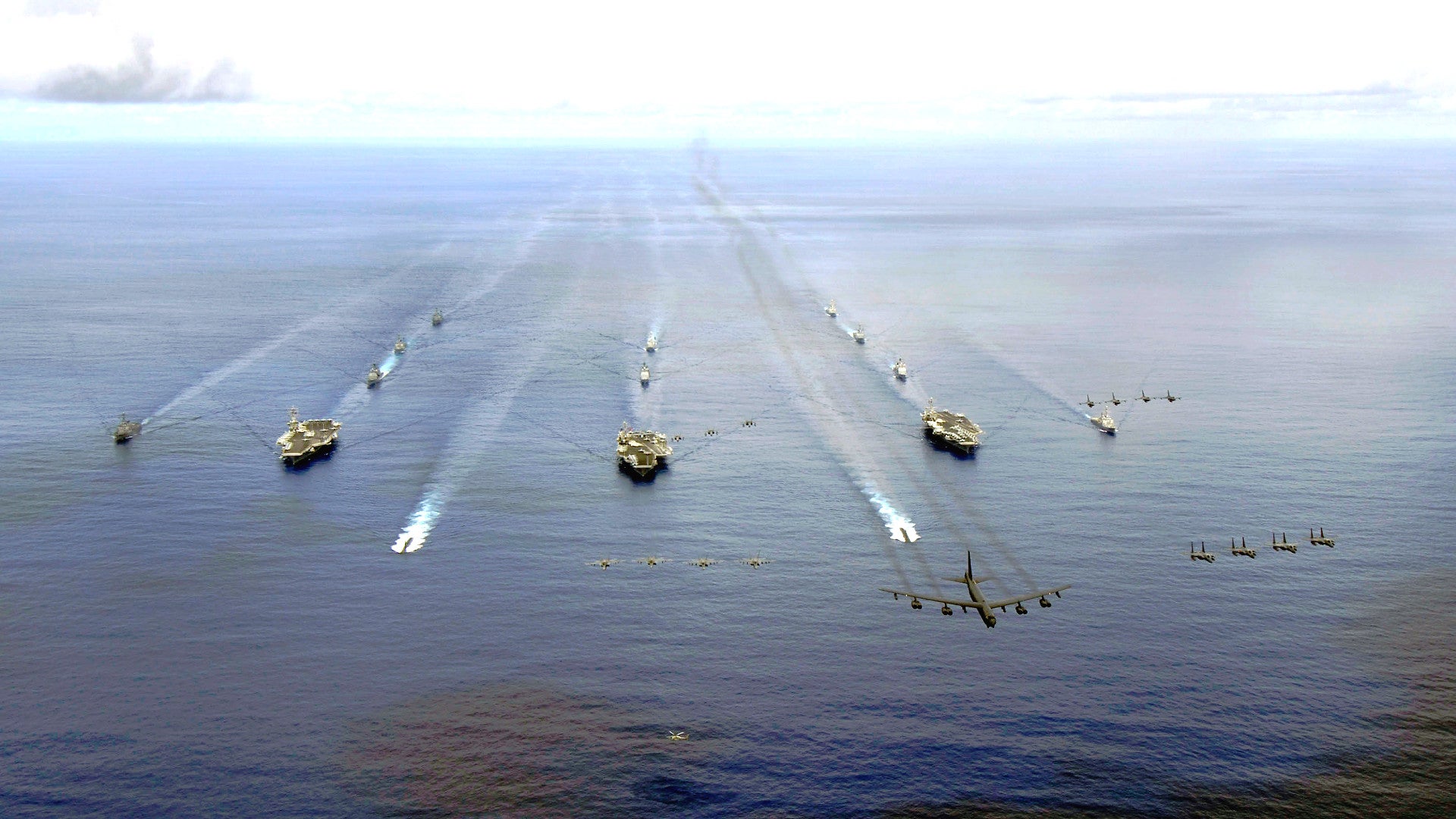To coincide with the end of U.S. President Donald Trump’s tour of Asia, the U.S. Navy will conduct a rare, massive naval exercise in the Western Pacific region involving three aircraft carrier strike groups. Undoubtedly a show of force aimed America’s regional opponents and rivals, chiefly North Korea and China, the drill comes amid concerns about the service’s overall readiness and news that seven of its 11 carriers, including the still in testing USS Gerald R. Ford, are presently at sea.
Beginning on Nov. 11, 2017, at which time Trump will be in Vietnam, the carriers USS Nimitz, USS Ronald Reagan, and USS Theodore Roosevelt, along with their air wings and escorts, will train to perform a variety of tasks, including, but not limited to defensive air combat and ship-based air defense, maritime surveillance, close-in coordinated maneuvers, and replenishing supplies at sea. This is the first time three strike groups have joined together for drills in the Pacific since Exercise Valiant Shield 2007 off the coast of Guam.
“It is a rare opportunity to train with two aircraft carriers together, and even rarer to be able to train with three,” U.S. Navy Admiral Scott Swift, commander of the U.S. Pacific Fleet, said in a statement. “Multiple carrier strike force operations are very complex, and this exercise in the Western Pacific is a strong testament to the U.S. Pacific Fleet’s unique ability and ironclad commitment to the continued security and stability of the region.”
The U.S. military has stressed that, officially, the maneuvers are not targeted at any particular country in the region, such as North Korea. The United States has been locked in a steadily escalating war of words with the reclusive communist regime and its premier, Kim Jong-Un, over a series of increasingly provocative North Korean ballistic missile launches and the test of a thermonuclear weapon earlier in 2017.
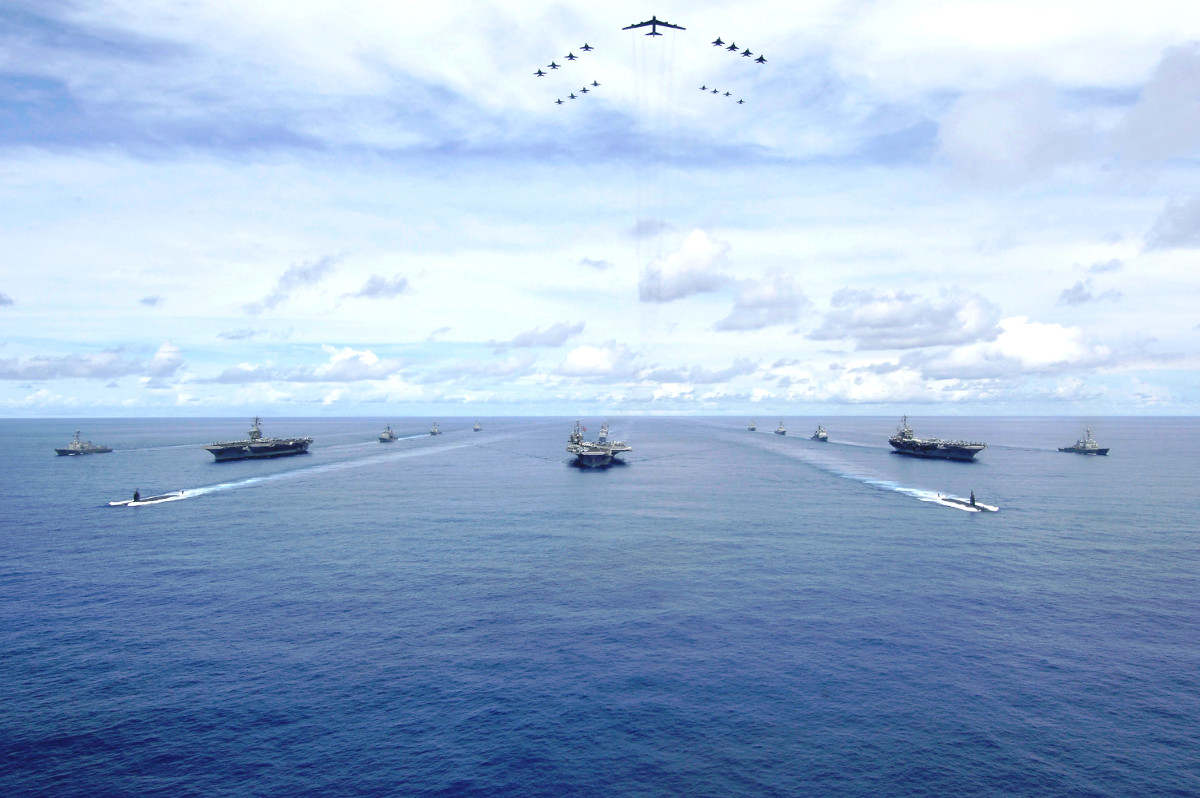
That being said, the Navy did note that similar gatherings in the past were specifically to demonstrate the service’s ability to bring together a large force “in response to any regional situation.”
And this formality notwithstanding, it is impossible to see the exercise any other way. Trump himself highlighted the carriers among America’s military capabilities in the region that could respond to a crisis on the Korean Peninsula in a speech to South Korea’s National Assembly on Nov. 7, 2017.
“Currently stationed in the vicinity of this peninsula are the three largest aircraft carriers in the world loaded to the maximum with magnificent F-35 and F-18 fighter jets,” the American president boasted. “I want peace through strength.”
It is important to note that the Navy has not yet begun to field its F-35C fighter jets and none of its carriers presently have Joint Strike Fighters on board. The F/A-18C/D Hornet and F/A-18E/F Super Hornet continue to be the backbone of the service’s carrier air wings. The U.S. Air Force and the Marine Corps do have their F-35A and B models, respectively, situated in Japan.
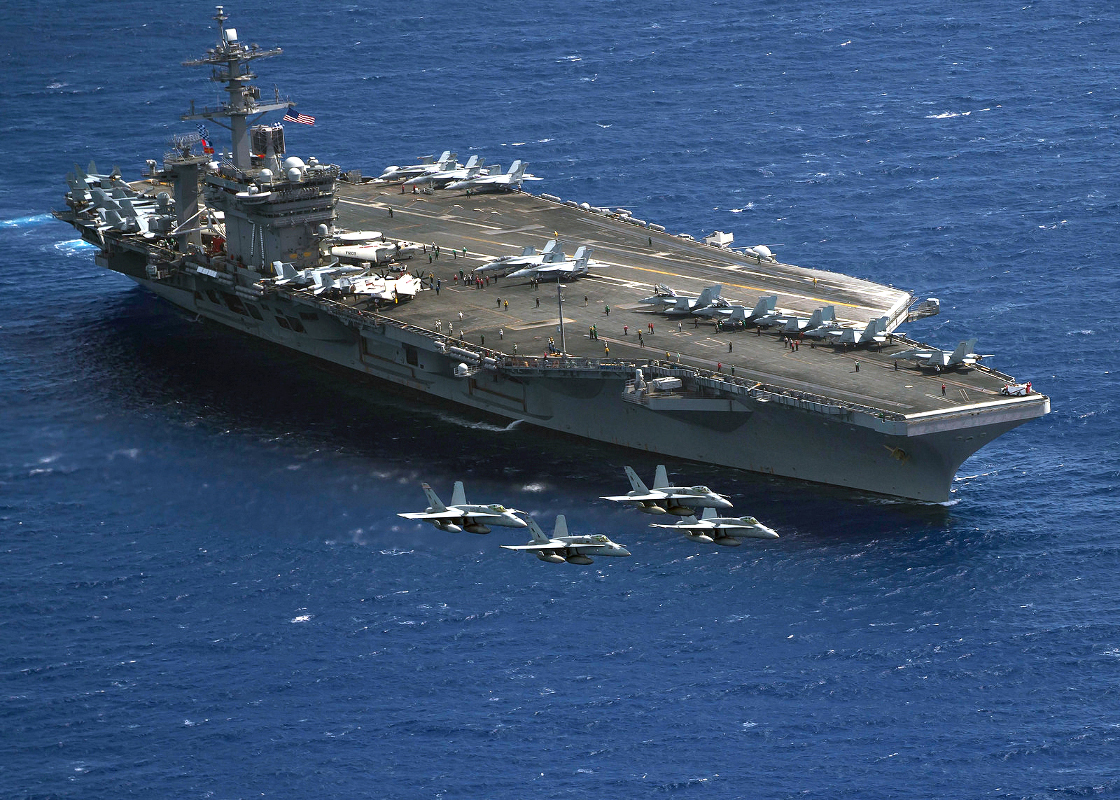
Though largely antiquated, North Korea’s dense air defenses mean that stealthy aircraft would likely conduct any air strikes in the opening stages of any military intervention on the Korean Peninsula. The sheer volume of airpower three carriers could bring to bear would still be important over the course of any such operation, though, especially since the carrier strike groups have significant stand-off strike capabilities.
Non-stealthy Hornets and Super Hornets could use Stand-Off Land Attack Missile (SLAM) variants of the AGM-84, as well as the unpowered AGM-154 Joint Stand Off Weapon(JSOW) glide bombs to attack targets from a safer distance. Escorting cruisers, destroyers, and submarines could all launch Tomahawk land attack cruise missiles from off shore, as well.
In October 2017, Ronald Reagan
made a scheduled visit to South Korea’s port city of Busan, also underscoring America’s commitment to that country and its allies in the region in the face of continued North Korean threats. In March 2017, the USS Carl Vinson had made a stop there, as well. Putting three Nimitz-class aircraft carriers together, each with a crew of approximately 5,500 and more than 60 fixed-wing aircraft and helicopters, is a significant statement no matter how one looks at it.
This isn’t counting the escorts, either. A typical carrier strike group includes a Ticonderoga-class cruiser, two or three Arleigh Burke-class destroyers, and a Los Angeles-class attack submarine. Logistics ships will also be present for the replenishment at sea drills. Other services may take part, as well. During Valiant Shield 2007, Air Force F-15 and F-16 fighter jets and B-52 bombers joined the carriers.
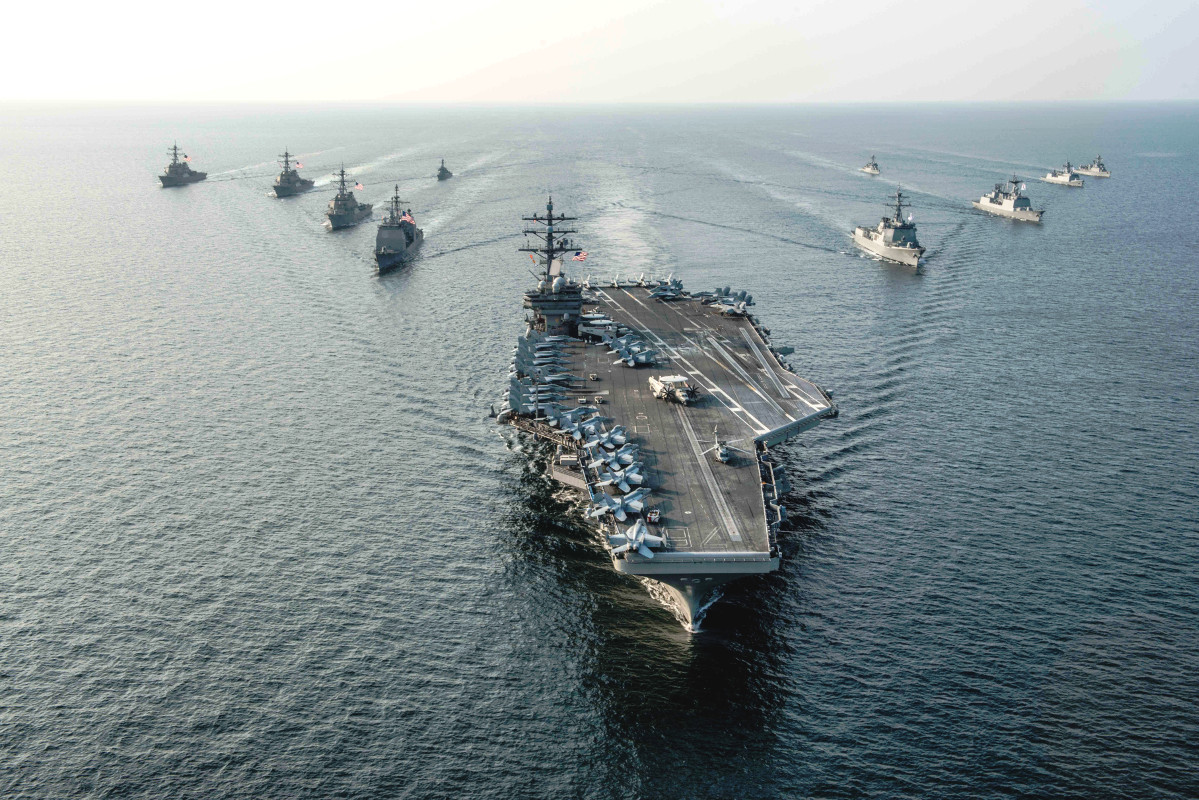
America’s regional allies are also expected to be present in some form for the major event. The Japan Maritime Self Defense Force’s Murasame-class destroyer JS Inazuma is among the foreign ships that will join the exercise, according to Reuters, citing anonymous Japanese officials.
As such, the exercise could also send a message to China, which has been steadily working to enforce its vast maritime claims, including in the East China Sea and the South China Sea. At present, the Chinese People’s Liberation Army Navy only has one carrier in total, the Liaoning, though the country is in the process of building a second.
The government in Beijing has, however, been steadily fielding other, increasingly capable surface ships and submarines, as well as improving the military capacity and defensive capabilities in and around various man-made islands in the South China Sea. Some of these bases now host bombers capable of carrying stand-off anti-ship weapons and land-based anti-ship missiles.
It is worth noting that President Trump did not bring up the issue during public appearances with Chinese President Xi Jingping. It was undoubtedly a conversation behind closed doors, though, and will be an important topic of conversation during the upcoming stops in Vietnam and the Philippines. Both of those countries have significant disputes with the Chinese over claims in the South China Sea. In 2016, China categorically rejected a ruling by an international court that upheld Filipino challenges to Chinese claims.
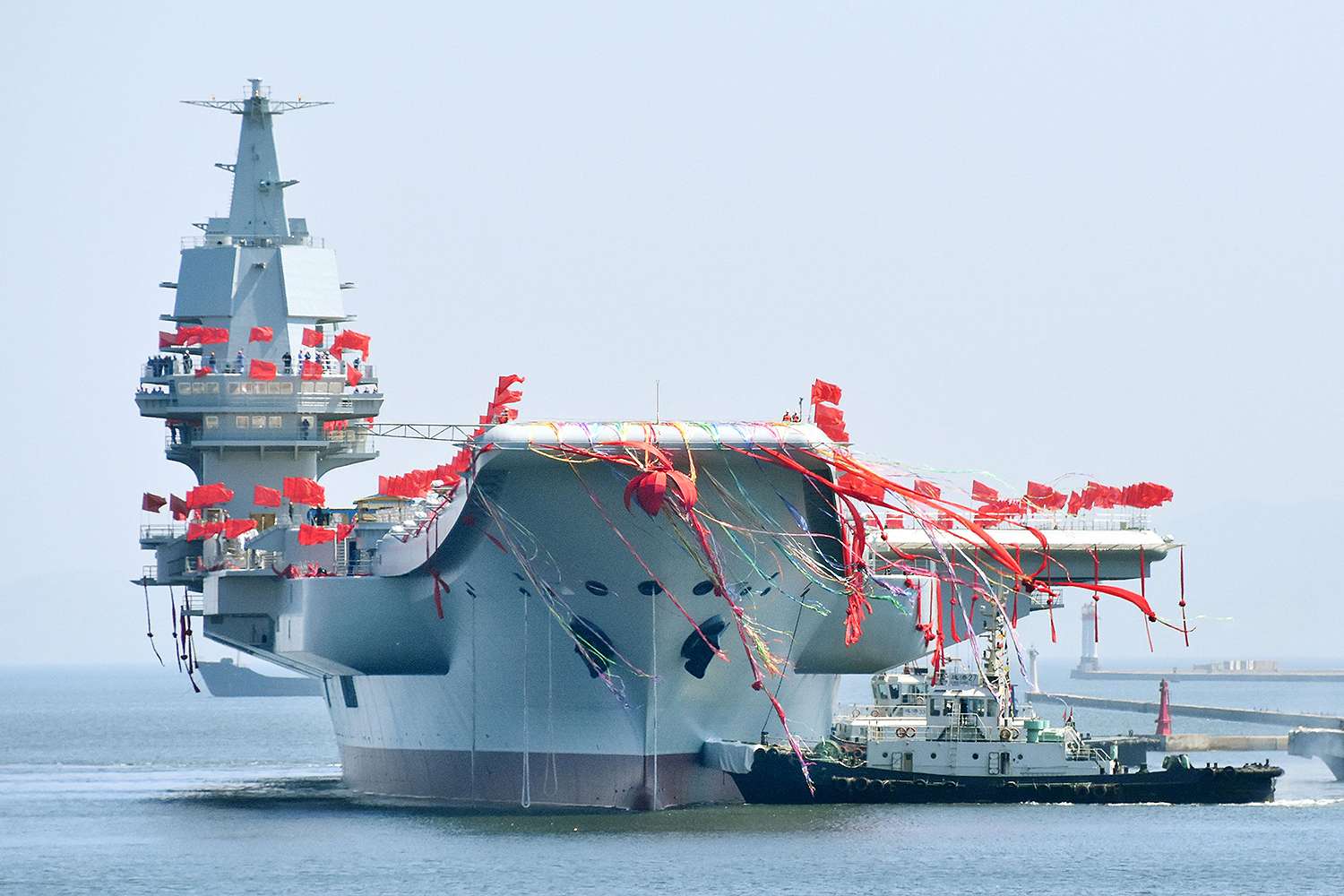
On top of sending messages to potential adversaries, putting the three carriers together in the Pacific right now can be seen as the Navy showing that it is still capable of performing its duties and responding to regional crises. Earlier in 2017, two separate and deadly collisions, which resulted in the deaths of a total of 17 sailors, underscored a dangerous readiness crisis within the service, especially among the ships it has forward deployed in Japan.
In September 2017, Secretary of the Navy Richard Spencer and U.S. Navy Chief of Naval Operations Admiral John Richardson went before the Senate Armed Services Committee to testify about the situation. Among the details that emerged from those discussions was that the service could only meet 40 percent of the demand for surface warships at any given time, in no small part due to a lack of personnel and budget shortfalls. It later emerged that there was at least a $5 billion maintenance backlog that threatened to keep ships and submarines sidelined for inordinately long periods.
Though America’s top naval officials have promised to conduct a major review of operations and implement a host of fixes, it’s unclear how long it will take to get things moving in the right direction. The demand to have ships at sea has not slowed.
At the beginning of November 2017, seven of the Navy’s 11 carriers were under way, including the three in the Western Pacific. The Nimitz-class USS Carl Vinson and USS John C. Stennis were conducting training or other tests in the Eastern Pacific, while Nimitz-class USS Abraham Lincoln and the new, first-in-class USS Gerald R. Ford were doing the same in the Atlantic.

According to USNI News, the last time this occurred was in 2004, when the Navy sent out seven carrier battle groups specifically to demonstrate its ability to “surge” ships in response to a crisis. In 2016, the service had six flattops at sea, which Admiral Richardson called a “milestone event” at the time.
Two years earlier, the Navy had announced plans to implement a new, standardized deployment schedule for its carriers, centered on an eight month operational deployment within a total 36 month cycle of maintenance, training, deployment, and downtime. This would have effectively reduced the number of carriers deployed at any one time from the typical three or four to just two. The idea behind this so-called “Optimizing the Fleet Response Plan,” or O-FRP, was specifically to produce more dwell time between deployments to ease the strain on crews, while also attempting to mitigate the impact of budget cuts.
Unfortunately, the demands of the campaign to defeat ISIS in Iraq and Syria and other contingencies only increased the demands on the carrier fleet. When the USS George H.W. Bush
returned home in November 2014, she had been at sea for nine months, sailed more than 73,000 miles, and performed a host of missions in the Middle East, North Africa, and Europe.
Having Nimitz, Ronald Reagan, and Theodore Roosevelt sailing together, along with members of other American services and foreign allies, will undoubtedly be another impressive display of American military might. At the same time, though, it is another indicator of trends that are likely to become increasingly unsustainable, at least in the near term.
Contact the author: joe@thedrive.com
